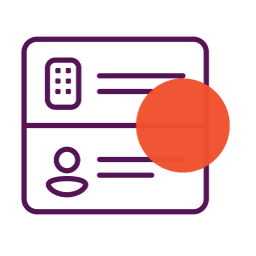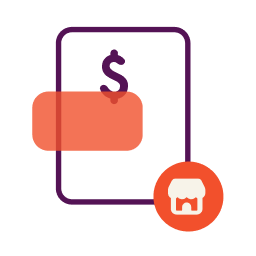Credit repair often takes time, but there’s one way to potentially change your credit scores dramatically—in as little as a month. It’s called “debt utilization,” and when used correctly, it may improve your credit scores.
When Calvin first started tracking his credit scores with Nav, for example, he was struck by how much his personal credit score would fluctuate from month to month. In the first four months he monitored it, his score went up 52 points, down 42 points then back up again by 46 points. (All of these changes were in relation to his original credit score.) He wasn’t doing anything crazy like opening a bunch of new cards to earn credit card rewards, nor had he paid anything late. It seemed his credit scores were moving in conjunction with one major factor: his credit card balances.
Calvin saw firsthand how a factor called “debt usage” or “utilization” can quickly increase — or lower — credit scores.
For example, here’s what happened to Calvin’s scores as his utilization changed:
How Utilization Impacts Credit Scores
Debt usage compares balances to credit limits on revolving accounts, mainly credit cards but also on lines of credit.
Let’s say you have a credit card account with a credit limit of $1,000, and your card issuer reports to the credit bureau that your balance is $500. Your debt usage ratio is 50%. If instead your reported balance is $200, your debt usage ratio is 20%.There is no perfect debt usage ratio, but generally lower is better (except 0%) and once it starts creeping above 20-25%, you may start to see it impact your credit scores. Some consumers find that paying down high-balance credit cards (reducing debt usage) can improve their credit scores quickly.
Debt usage is calculated both on individual revolving accounts and in the aggregate (the total of all credit limits on open accounts compared to the total of all revolving balances). Notice in Calvin’s example there is a figure for total debt usage. In September it drops by 7 percentage points and his scores jump considerably. In October it’s higher, and his score is closer to the original score.
But those relatively small changes in his overall debt usage probably aren’t driving those big swings. Instead, what’s more interesting here is the debt on his two credit cards. In October, his debt usage on his first credit card jumped to 79%. That’s considered very high and his credit score drops quite a bit that month. It’s lower in September (56%) and his score is much better.It’s worth noting that a debt usage ratio of 56% is still on the high side. If it were lower, he may have had an even better score, though other factors such as age of credit, payment history, credit mix and applications for new credit impact scores as well.
How to Improve Credit With Utilization
If you learn that your credit utilization ratio is affecting your credit scores, here are some strategies that may help to bring that number down:
- Pay down credit card debt. This is the ultimate strategy since it also saves money by reducing interest costs. Note that most business credit cards don’t report to personal credit. Learn more.
- Pay your credit card bill before it’s due. Here’s the kicker. Even if you pay in full each month, this credit score factor can still affect you. That’s because most credit card issuers report statement balances to credit bureaus at the end of the billing cycle. (That’s when the balance for the month is totaled.) You then have several weeks until your credit card payment is due. So before you make your payment, the balance gets reported.
You can counter this by paying shortly before your statement closing date (which is on your credit card statement). If your payment is credited before the balance is calculated for the billing cycle, you may end up with a lower balance on your credit report. And that can impact your debt utilization ratio. (If you’re a business owner, the strategy of paying bills early can be even more important for building good business credit scores.) - Consolidate. For those who don’t have extra cash lying around, consolidating high credit card balances can potentially save money and bring down debt usage. Personal loans are usually installment loans, and installment loans aren’t treated the same way as credit cards when it comes to debt usage. (Auto loans, student loans and mortgages are also installment loans.) Ideally you also want to get a lower interest rate when you consolidate, so be sure to compare costs.
- Request a credit limit increase. A higher credit limit gives you more leeway for this factor. If you pay on time, many credit card issuers will be happy to give you a higher credit limit.
Tips for Managing Utilization
A few things to keep in mind if you are working on debt usage:
- Credit scoring models are complex, and there are many different ones lenders can use, so individual results may vary. Someone could have the same exact debt usage ratio on a credit card as you do, and their scores could be different because of all the other information in their credit reports.
- Credit scores are calculated when they are requested. The information available at that time is what will be used to calculate the score. Lenders report at different times of the month, though most report around the end of the billing cycle (not the due date). You can check your issuer’s reporting date by comparing the balance on your credit report with your most recent credit card statement.
Debt utilization is just one of the major factors that can help you build good credit scores. The other major credit score factors are:
Payment history. Late payments or other negative information will hurt your credit scores. On-time payments, of course, can improve your credit, whether you’re trying to build credit or rebuild bad credit.
Credit inquiries & new accounts. Opening new accounts can increase your overall credit limits (a plus) but there will be a hard inquiry that can temporarily lower your credit scores. It’s fine to get a new credit card you really want, but understand that you may see a temporary dip in your scores.
Age of credit: This refers to how long you’ve had credit accounts listed on your credit file. Overall, an older credit history is better than a shorter one. Individuals with a relatively new credit history may benefit from becoming an authorized user on another person’s credit card, if it has a long reporting history with no missed payments and low utilization.
Types of credit. You’ll generally score better for this factor if you have a mix of different types of credit accounts (installment versus revolving).
FAQs
This article was originally written on July 12, 2017 and updated on February 8, 2023.




Have at it! We'd love to hear from you and encourage a lively discussion among our users. Please help us keep our site clean and protect yourself. Refrain from posting overtly promotional content, and avoid disclosing personal information such as bank account or phone numbers.
Reviews Disclosure: The responses below are not provided or commissioned by the credit card, financing and service companies that appear on this site. Responses have not been reviewed, approved or otherwise endorsed by the credit card, financing and service companies and it is not their responsibility to ensure all posts and/or questions are answered.